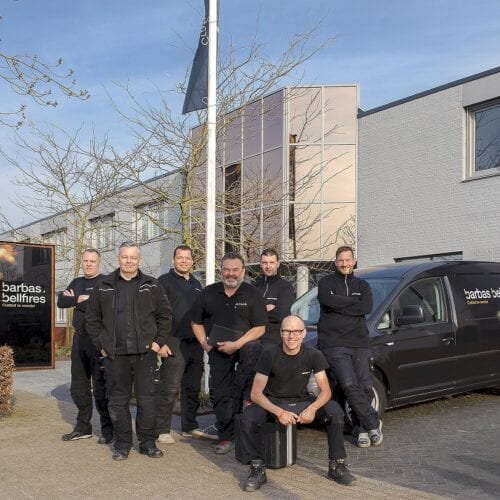Is the fire unattractive? Too much smoke and too few flames? Perhaps you are using the wrong type of wood or you’re stoking in the wrong way. Stoking wood is serious business. That’s why we have formulated ten golden rules and tips for you.
Good preparations
- Make sure that your fireplace has the correct output. A stove with too much or too little output does not work well. The result is incomplete combustion. That means an unattractive fire, perhaps smoke and it is certainly bad for your health and the environment.
- Have the chimney swept at least once per year by a certified professional. This prevents problems; in worst case scenario, a chimney fire.
- Do not light the fire when there is no wind or during a misty day. During mist or lack of wind, the flue gases remain in the house. This is hazardous to your health and as well as to your neighbours’ health. Wind force of 2 or less on the Beaufort Scale is considered windless weather. The Stoking Guide (Stookwijzer) will show you what are good stoking conditions.
- Stoke only dry and untreated wood. Preferably wood with a trademark (FSC or PEFC) so that you know that that forest is replanted in order to compensate for felling. The wood must be cleaved, it must dry outside for at least two years in a covered place and must not be too thick. It is recommended to use a hygrometer to measure the moisture of the wood. The moisture of the wood must be between 15% and 18%.
- Never use painted or impregnated wood: they release heavy metals during combustion. Chipboard is also forbidden due to the glue in it. Do not stoke any paper or carton, because that creates lots of smoke and flying ash and is therefore forbidden to use as fuel.
Get going
- Light the wood fire by using firelighters and small pieces of wood. It’s a really bad idea to start the fire with flammable liquids (for example spirit); this could lead to highly dangerous situations, such as bursting flames. So what is a good method? Start by placing the thick logs at the bottom of the fireplace, on top of these place the loose pieces of wood and the firelighters, and then light these items. Stack the wood loosely so that air can flow well around the logs. The best method is the Swiss stoking method.
- Make sure there is complete air supply. Good wood-burning stoves are equipped with a valve that controls the supply of air. Open these valves completely. Is the fire becoming too hot? Then do not add any more wood. Never reduce the supply of air.
- Is it too warm indoors when the wood-burning stove is on? Stoke less wood and open a window for a few minutes. What you must never do is to close the air supply valve. That suffocates the wood: the wood does not burn completely, creating lots of extra harmful substances.
- Check whether you are stoking well. A good fire has yellow, even flames and you hardly see any smoke coming out of the chimney. Orange flames and dark smoke indicate that the combustion is not good: therefore, make sure there is a sufficient amount of air supply or extra air supply.
- Let the wood fire extinguish by itself. If you temper the fire by reducing the air supply, you release lots of hazardous substances.
Still not managing to get a good fire going? Then our stoking course (and refresher course) is something for you. You will then learn all the fine tricks of stoking. Read more about it here.



